If you are a DIY enthusiast, you probably know that you can reuse all kinds of bolts and screws. But can you do this to a flywheel bolt that is subjected to high temperature and stress daily? We have researched this question, and we have the answer below.
You can only reuse a flywheel bolt if it is not the "torque-to-yield" type and is currently in good condition. A torque-to-yield bolt means that a bolt is designed to be used only once.
This kind of bolt is not recommended for second-time use because once its maximum yield strength is reached, it will not hold up as well as if it were new.
Basically, you have two options here: a torque-to-yield flywheel bolt and a reusable flywheel bolt. Keep reading if you want to know which one is better. We'll also answer relevant questions that most people ask about our topic, so you don't have to look for answers elsewhere.
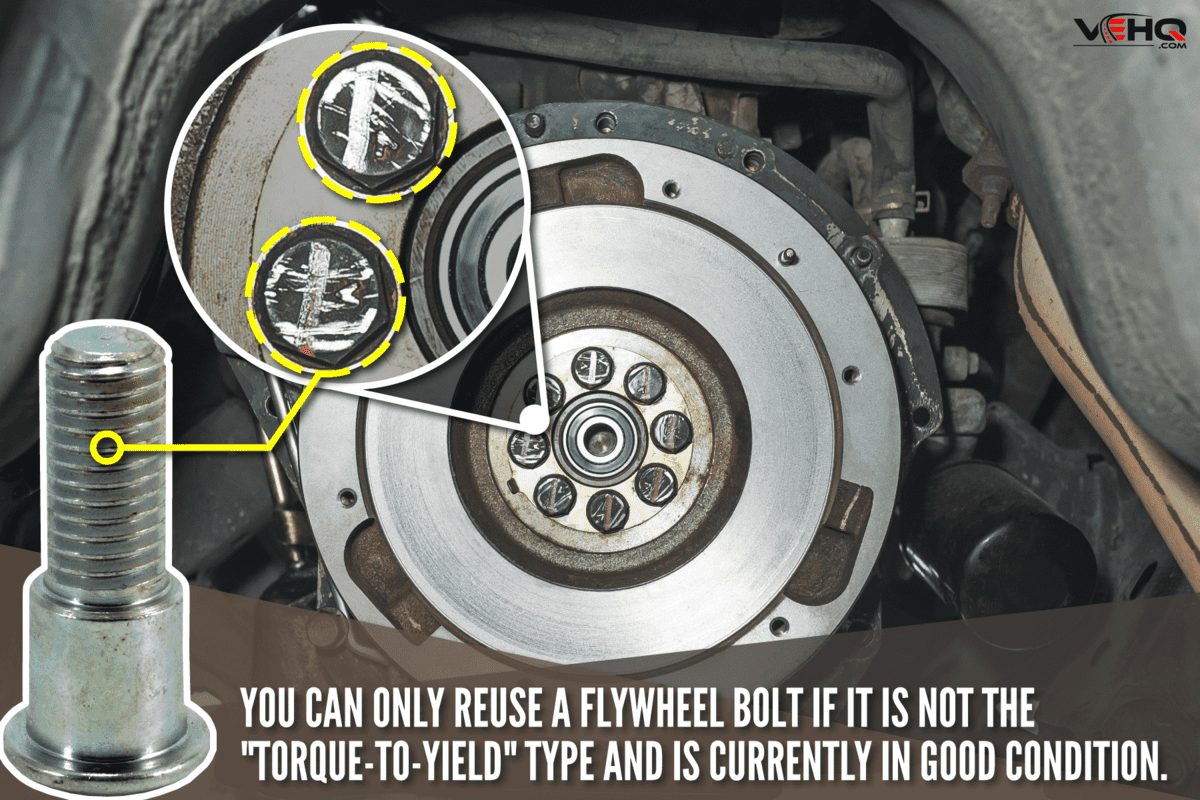
How To Know If Your Flywheel Bolt is Reusable or Not?
You will always need to replace your flywheel bolts after they wear out, but it is not necessary to buy brand-new ones every time you take the flywheel out for service or replacement.
This is because the flywheel bolt may still have enough strength to hold your flywheel on the flange.
If you feel that your flywheel is not secured well enough, it may be time to replace your flywheel bolt. Besides, you will see some obvious signs of wear and tear and stripping in the thread to tell you if the bolt needs replacement.
The best way to know if your flywheel bolt is reusable is to check your vehicle's owner's manual or contact your car dealer and ask about it. Some vehicles have longer, premium-grade flywheel bolts, like the F-150 and F-250 Raptor, which can be reused once.
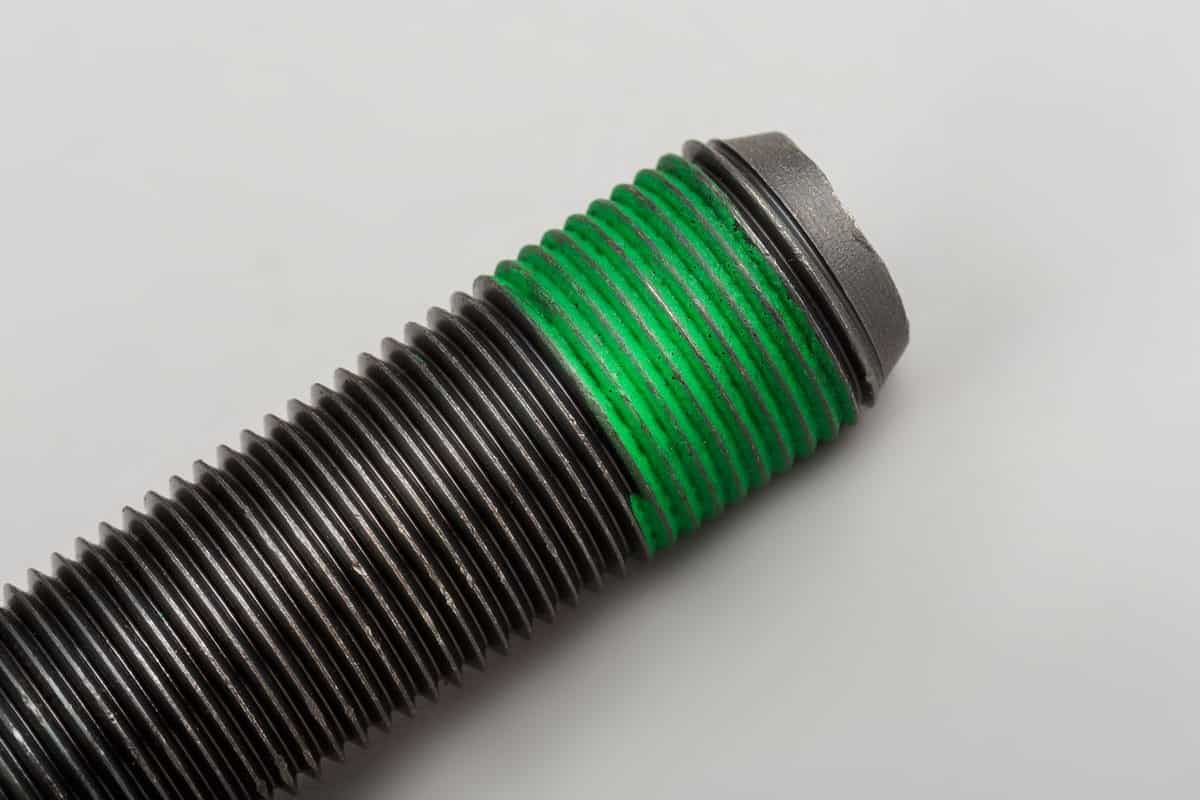
Which is Better: Reusable Flywheel Bolts Or Torque-To-Yield (One-Time Use) Flywheel Bolts?
Torque-to-yield flywheel bolts are designed to absorb and dissipate torque spikes and vibrations better than reusable ones. This is because they are made of a unique material that can stretch when the torque reaches the maximum yield strength.
The maximum yield strength is the maximum amount of stress that a material can sustain before it breaks.
This flexibility makes it less likely to strip out the threads and ensure that the flywheel bolt remains tight. Conventional flywheel bolts also have this feature, but since they can be reused, they will not stay tight as well as if installed the first time.
Simply put, you can only get the best performance out of both reusable and non-reusable flywheel bolts the first time you install them.
Nonetheless, one significant advantage of reusable flywheel bolts is that they allow you to install them the second time around without worrying about the quality of their threads, which means that they can be convenient if you can't find a torque-to-yield flywheel button to use.
It's always a best practice to replace flywheel bolts every time you remove the flywheel, but it's not necessary unless you're using a torque-to-yield bolt.
Here's a video explaining why you should not reuse a flywheel bolt.
How Tight Should Flywheel Bolts Be?
Flywheels are heavy and they're usually placed on the engine's crankshaft, so it is crucial to tighten your flywheel bolts to the correct torque. Loose flywheels will affect the car's balance and responsiveness.
The torque value of a flywheel bolt varies according to the type of vehicle that you have. This is because bigger engines require bigger flywheels, and bigger flywheels require bigger flywheel bolts. It's always a good idea to refer to your car's manual for the correct torque setting.
How To Tighten Flywheel Bolts
As a general rule, all flywheel bolts should be tightened evenly. To do this, make a quarter turn at a time for each bolt three times in a crisscross fashion using a socket ratchet with the following torque specifications: 25 ft/lbs, 60 ft/lbs, and 79 ft/lbs.
As previously stated, tightening the flywheel requires you to apply a certain torque in order to get a tight fit and prevent the bolts from loosening. However, this can be improved by applying Loctite to help lock the bolts in place.
Loctite is a brand of adhesive that is used to strengthen the connection between two parts. It is used to create a strong bond between two metal surfaces. Loctite is very popular in the automotive industry, as it is used to secure flywheel bolts to the flywheel.
How To Loosen Flywheel Bolts
Loosening flywheel bolts can be a pain in the behind if you don't have a power tool. This is because you'll have to look for ways to prevent the flywheel from rotating so you can get a better grip and leverage on the bolts. The video below shows how it's done.
Check out this impact wrench on Amazon.
Do Flywheel Bolts Have The Same Size?
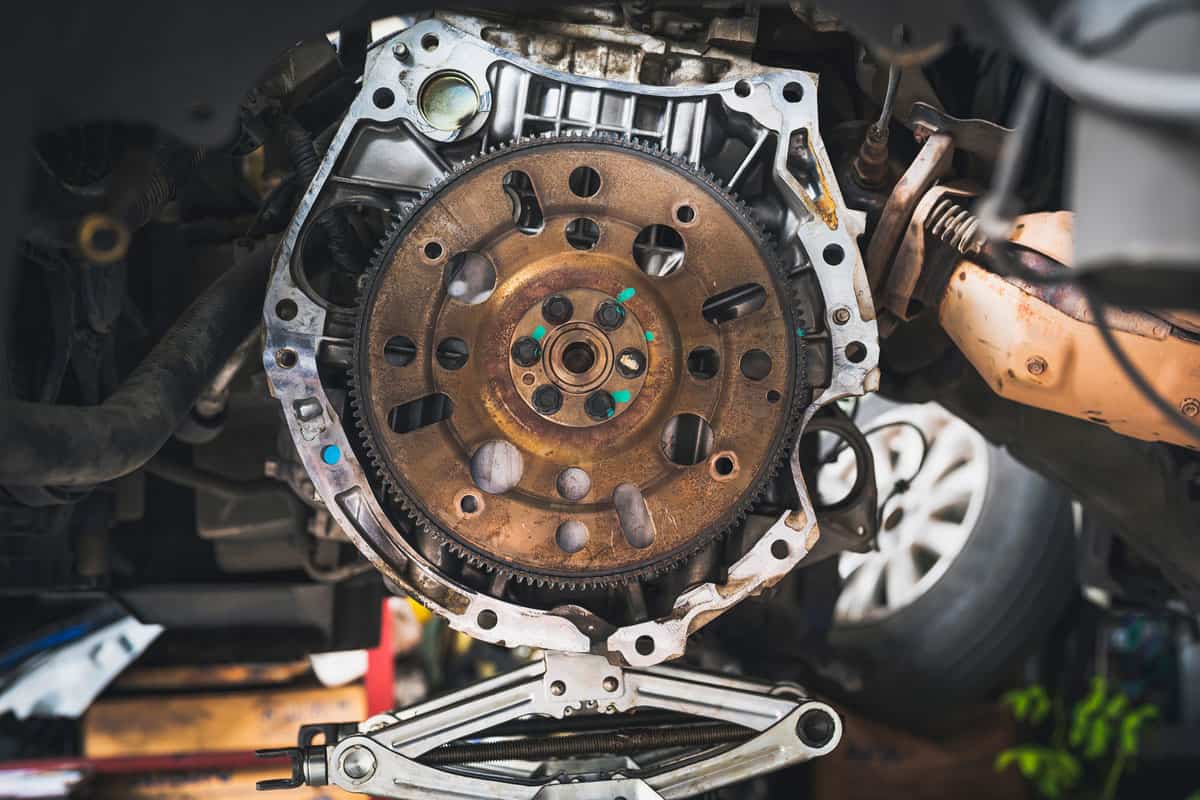
Flywheel bolt sizes (and also length) differ from one car manufacturer to another. When you are buying a flywheel, it is important that you know what the flywheel bolt size is correct for your particular vehicle and engine.
The same is true if you have purchased an aftermarket flywheel.
It is not a good idea to install new flywheel bolts without knowing the correct bolt size. When the flywheel bolt size is different than the flywheel bolt size specified in the manufacturer's instructions, the flywheel may not fit properly or at all as the bolt hole may be too large or too small to match the flywheel bolt. Make sure to check them thoroughly to ensure they all fit the same.
What is the Main Cause Why Flywheel Bolts Break?
Flywheel bolts become vulnerable to breaking over time due to the forces involved in the transmission. They're used to connect the flywheel to the crankshaft, and they have to withstand the extreme loads and torques that occur during an engine operation.
In most cases, flywheel bolts crack from fatigue, which means the bolt is continuously under stress and is being pressured by the force exerted on it. Similarly, flywheel bolts can crack from heat because they are subjected to extreme temperatures.
However, one major factor in determining if your flywheel bolt is going to make or break is its length more than its grade.
If you use a flywheel bolt that is longer than the recommended length, then it will be subject to greater stresses and forces (side loading) than those of a shorter bolt. This will increase the chances of your flywheel bolt breaking prematurely.
You should replace them immediately if this is the case, otherwise, it will lead to a costly repair. You don't what the situation to get out of hand.
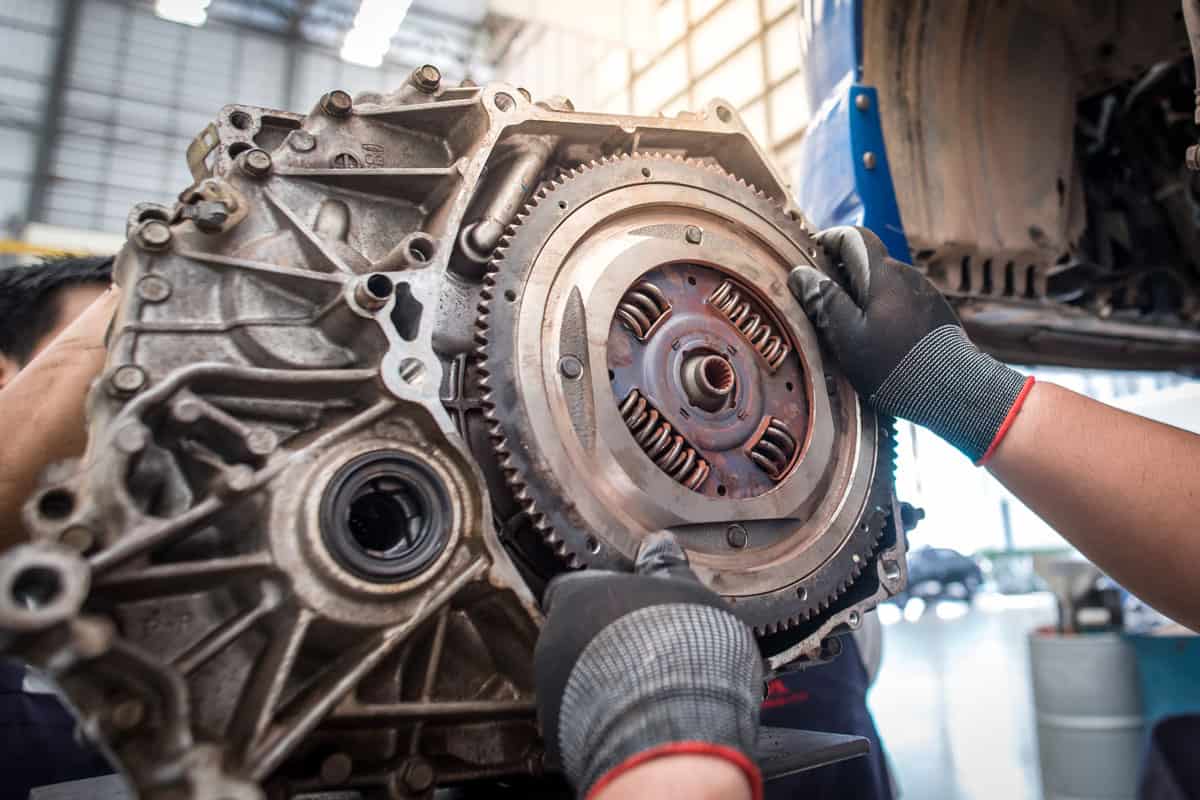
Are Flywheel Bolts Standard Or Reverse Thread?
Generally, flywheel bolts follow the "lefty loosey, righty tighty" rule: you tighten it by going clockwise and loosen it by going counter-clockwise. In some cases, you'll find a reverse thread flywheel bolt, this is very rare.
If the bolt is too tight that you begin to wonder if it may be probably a reverse thread, always refer to your car's manual or ask your car dealer about it.
What Can Go Wrong If My Flywheel Has Come Loose?
One distinct symptom of a loose flywheel is a weird noise that varies when shifting gears. This is more evident if the vehicle is being used at a high RPM level and the engine is experiencing more stress.
You will also experience your engine vibrating more as you shift to higher gears.
A loose flywheel could also cause your clutch to wear out faster than usual. This can happen if the situation has gotten especially bad and causes a jerky gear shifting.
Jerky gear shifting is a sign that the friction is not optimal, and this will translate to a high repair cost. This will eventually cause your transmission to slip if left unchecked for a long period of time.
As a result of this friction, the surface of the clutch plate will get worn out. The more friction, the quicker the surface gets worn. In addition, the friction will also cause the material of the clutch plate to heat up, causing it to expand.
This expansion will eventually wear the clutch plate out. Once it is worn, the clutch will no longer be able to prevent slippage.
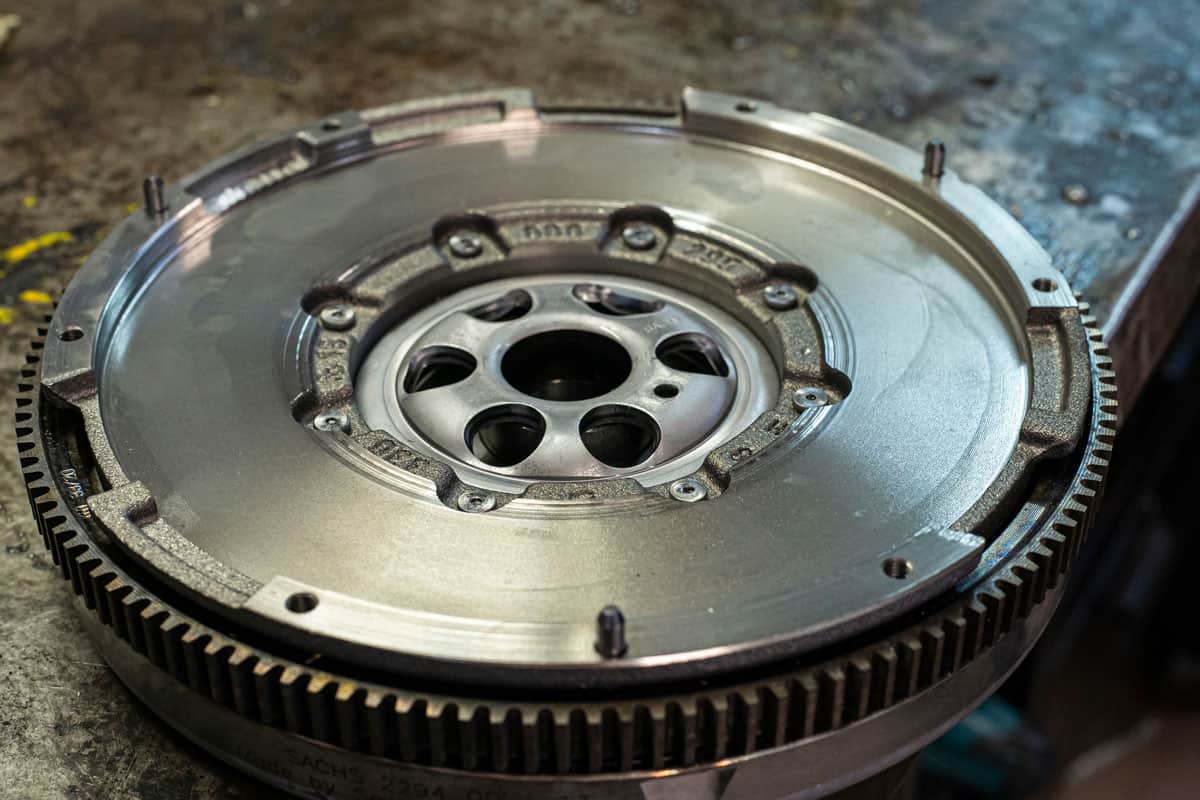
What Causes Flywheels To Fail?
A slipping clutch is one of the most common problems in a vehicle. A slipping clutch can be caused by worn or damaged friction material in the clutch plate. The heat generated by the slipping clutch can easily warp the flywheel and eventually damage it.
When a clutch slips, it means that the engine has not been able to disengage the transmission from the drivetrain. The resulting torque is transferred through the driveshaft to the transmission.
What is the Average Lifespan of a Flywheel?
A flywheel will last for about 100,000 miles. However, it will wear out faster if it's exposed to extremely high temperatures and abrupt temperature changes. Also, if the flywheel isn't properly maintained, it could break down due to friction, excess heat, or other reasons.
In Closing
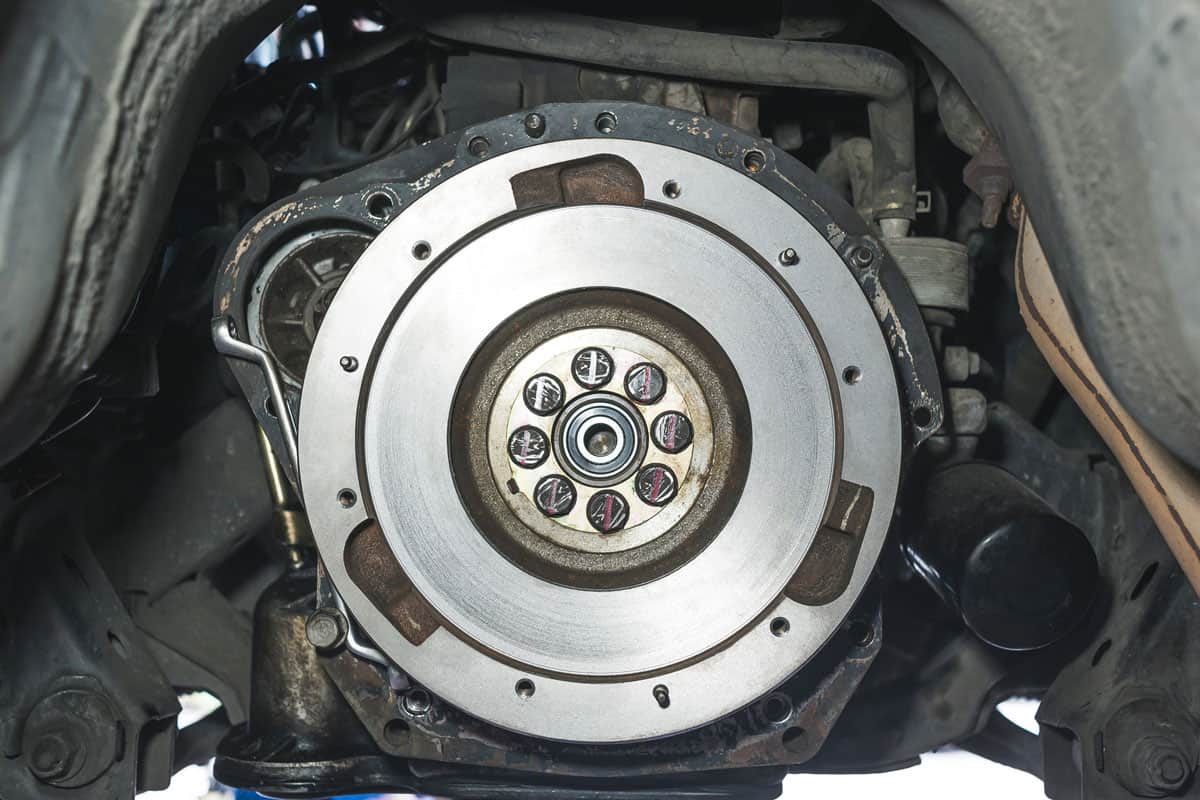
A flywheel bolt is a specialized type of bolt that is made to withstand the high temperatures of a flywheel, so it just makes sense to replace them whenever you can.
If you want to reuse a bolt, then you must be careful to make sure the bolt is in good condition. Once a bolt is used, it may not be able to hold up under the stress of the torque the second time around. If you need to reuse a bolt, you must carefully inspect the bolt to ensure they are still usable and safe to use.
You might also like:
Is It Safe To Drive With A Missing Lug Nut? [Here's What You Need To Know!]


